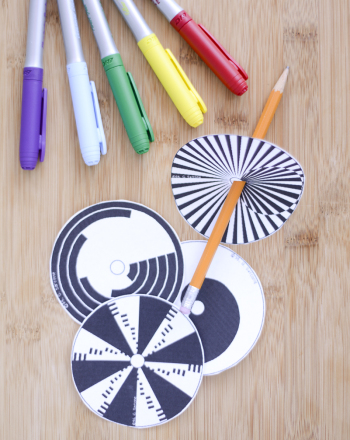
Cargando...
Zer egin dezaket?
226350 materialEducativo
textoFiltroFichaBaliabide honi buruz...

The human eye is comprised of two types of receptors: rods and cones. Cones allow us to see color and work well in bright light. Rods are used to see in low light. When a color wheel or optical illusion like the Benham disk spin the brain has to process the colors the eye perceives very quickly. In a spinning color wheel the images blend and we see colors we might not have expected. Scientists have several theories on why we see the colors we do when we spin an optical illusion like the Benham disk or Maxwell top. One is that the different types of cones respond to the image at different rates and stay activated for different periods of time, thus we see colors when the disk spins. Another theory is that the black and white spaces activate different parts of the retina of the eye causing interactions with the nervous system that allows us to see colors. Scientists are still unclear exactly why this phenomenon occurs.In this project the student will experiment with spinning color wheels and optical illusions researching why the eye and brain process visual information the way that they do. The goal of the project is that the student will formulate their own questions and develop their own understanding through a hands-on independent inquiry of the human eye, light and color.
It is an educational content by education.com.
By clicking on the title of this resource, you will be redirected to the content. If you want to download the project, you just have to join the website, which now is for FREE.
Kide hauentzat bakarrik:

Mira un ejemplo de lo que te pierdes
Autores:
Kategoriak:
Etiketak:
Fecha publicación: 12.5.2016
Baliabidearen jatorrizko lizentzia errespetatzen da.
Aipatu nahi al duzu? Erregistratu o Hasi saioa
Didactalia-ri Gehitzea Arrastra el botón a la barra de marcadores del navegador y comparte tus contenidos preferidos. Más info...
Aipatu
0